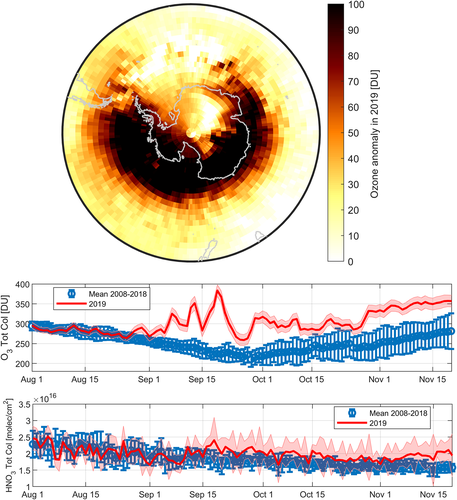Smallest 2019 ozone hole ever recorded by IASI over Antarctica
While sudden stratospheric warming (SSW) events are more common in the Northern Hemisphere, Safieddine et al. (2020) investigated the rare SSW event in the Southern Hemisphere that occurred in 2019 using satellite and ground-based station data. They demonstrated the ability of the IASI instruments to detect simultaneously the stratospheric warming and the evolution of the ozone and nitric acid total columns. In particular, due to the warming, very little ozone destruction took place in 2019, leading to high ozone columns, and to the smallest recorded ozone hole over Antarctica since IASI observations began.






